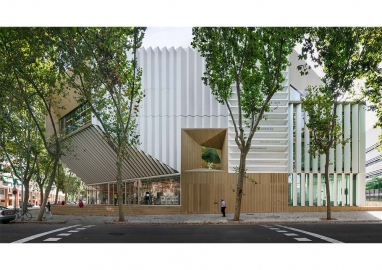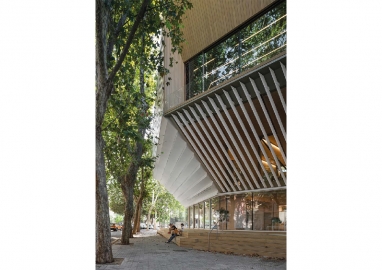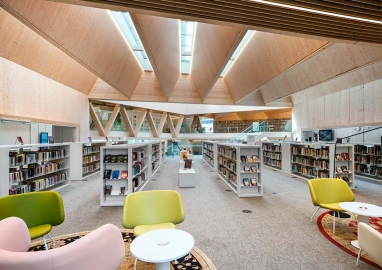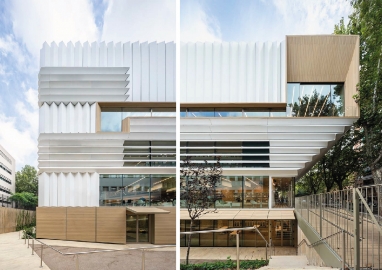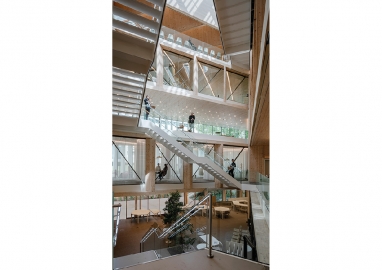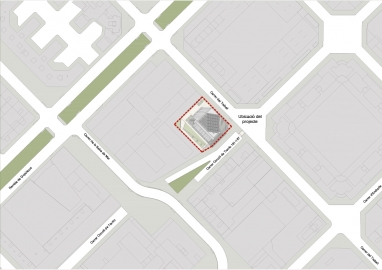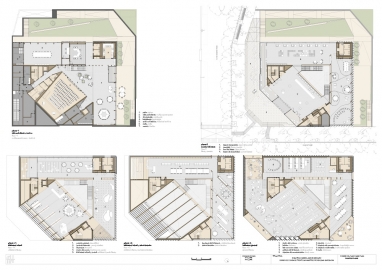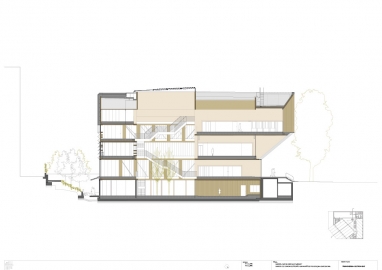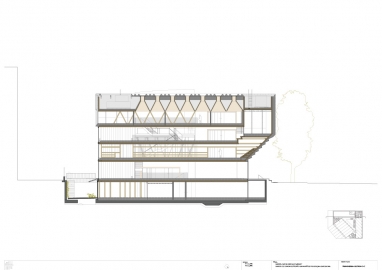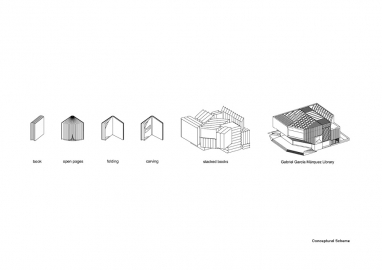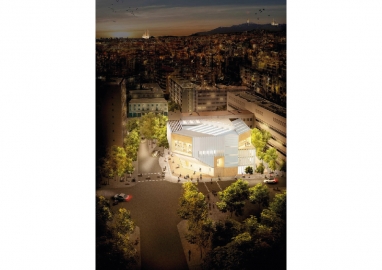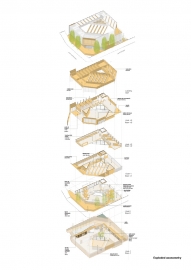Gabriel García Márquez Library
The García Márquez is a pioneering and landmark library that culminates a three-decade plan building these facilities in Barcelona. It serves a working class and vindictive neighborhood, lacking significant investment for years, that demanded its "people's palace" ever since and now enjoys the “best new library in the world”, according to IFLA.
The library's sculpted form evokes blocks of stacked books with folded pages. It sits on an elevated plaza that allows fluid pedestrian circulation around and cantilevers over the open area, creating an urban lounge that extends the pedestrian and cultural axis of the neighborhood, enclosed by the big existing trees.
The library offers a reinterpretation of the characteristic chamfer of Barcelona's Eixample to a street cross that is now Plaça Carmen Balcells. The 45º geometry of the chamfer is also that of the north-south axis and crosses the entire library, with triangular courtyard and cores, and an envelope that seeks indirect light in its facades and skylights, avoids frontal views of the police station and looks at the street trees.
The facility has 4,294 m2 distributed over 5 floors around three vertical cores and a central triangular atrium with zenithal lighting.
The site is a small rectangular plot at a cross of two secondary streets, behind a police station. The limited footprint multiplies the number of floors, without exceeding the tree canopy, and the elevated ground floor allows for light and independence of uses on the lower floor through the rear garden.
The building sits on three cores around a triangular courtyard, connected by different timber trusses, which house the most independent spaces and free up open-plan areas. The geometry and position of the cores activate circulation in and around the atrium, multiplying the views and itineraries through the library and turning the void into a centripetal and connective space with a spiral staircase.
The project was accompanied by a programmatic research to redefine the contemporary library model. For its collection of ECOSYSTEMS, formal and informal situations, local and global, were analyzed and then combined and designed holistically to foster the experience of accessing, exchanging and producing knowledge. From the Agora-Showcase to the Forum of Ideas or the Palace of Reading, the library is a landscape, a Spiral of Encounters, where anyone can find his or her place.
The library features numerous energy-efficient and sustainable strategies, passive and active, accredited with a LEED Gold certification, such as: the atrium that performs as a solar chimney; a lightweight, ventilated fiberglass envelope with resins that optimizes solar protection and natural lighting; industrialized and prefabricated construction systems; low emission materials and greenhouse gas storage from structural wood; photovoltaic panels; recycled rainwater, etc…
The timber structure not only solves the load-bearing requirements, but also qualifies the spaces, orients them, and organizes visuals and circulations, defines their scale and character, and is designed holistically together with the rest of the architectural and programmatic elements to form a coherent ecosystem.
The structural ensemble is fundamentally resolved with exposed laminated and cross-laminated timber (the largest exposed volume in Europe to date of construction), combined with singular and reinforcing steel elements, and joinery and assembly proper of cabinetmakers. The result combines warmth, lightness and visual permeability.

